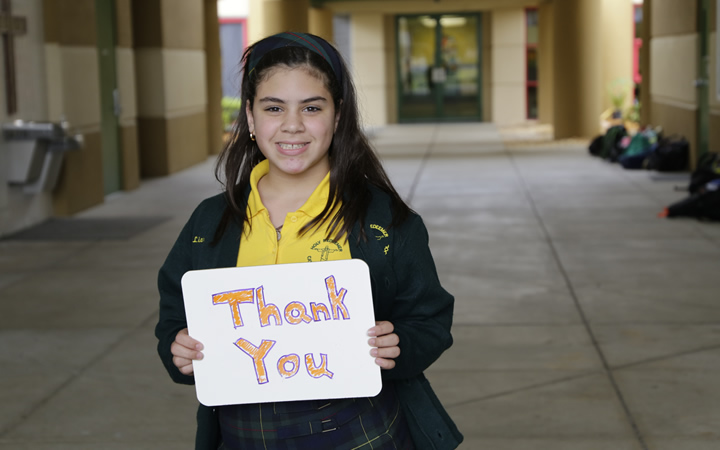Don’t Think You’re a Catholic School Donor? Think Again

Like many people, I sometimes have trouble sleeping on airplanes. The best solution to this is some reading. Usually, after a few pages or so of an innocuous novel or article my eyelids will get heavy and I’ll knock my head back, mouth agape, and be out for the flight.
That was the plan as I paged through Catholic School Renaissance: A Wise Giver’s Guide to Strengthening a National Asset on a flight to Denver a few days ago.
But much to my surprise, I didn’t doze. In fact, I was riveted. For the whole two-hour flight, I sat in my middle seat, forearms pulled in close like a T-Rex, flipped through the pages, underlined, and made marginalia.
The guidebook, by Andy Smarick and Kelly Robson, is ostensibly for donors with an interest in giving to Catholic education. Throughout its 120 pages, they outline a brief history of Catholic education and outline numerous new programs, networks, and efforts out there to contribute to what they are calling the “Catholic School Renaissance.”
But as much as I fantasize about diving in my giant pool of money like Scrooge McDuck, I am not a “Wise Giver,” at least not at the level of Smarick and Robson’s audience. So why was I bothering to read this? And why should you?
Because—despite its audience, and perhaps because of it—it’s probably the most comprehensive overview of the state of Catholic education right now.
To begin with, the guidebook gives a great history and background of Catholic education in the United States. You can find this information in books, of course: Catholic education’s rapid rise in the ‘60s and enrollment decline soon after. But for a quick overview of American Catholic education’s history and reasons for investment, you can’t do much better than Chapter 1 of the guidebook.
But more helpful is the treasure trove of information about the numerous efforts happening all around the country. Smarick and Robson describe several new Catholic educational models and networks in places like Memphis, Camden, Philadelphia, and our own Notre Dame ACE Academies. Indeed, nearly every major region of the United States is represented in some way, making this a great resource for discerning Catholic school teachers and leaders—especially those finishing up a program or looking for places to extend their reach.
Nationwide efforts to increase access for students and cultivate talent among teachers and leaders are also discussed, as well as a chapter on national advocacy and policy change.
Other crucial elements affecting Catholic education right now are also mentioned, including blended learning, wraparound models, emphasis on more robust compensation, and others.
Overall, if you’re at all interested in getting a good “bird’s-eye” view of Catholic education in America, the guidebook is worth your time—even if, like me, you might not consider yourself a “Wise Giver.”
After all, as Catholic school donor Leo Linbeck III says in the book: “The biggest collective ‘donation’ to Catholic education comes from Catholic school teachers and principals . . . they’re foregoing pay to serve a higher purpose.”
Those of us working in Catholic education very often to keep our heads down and our eyes forward, with a tenacious focus on making our schools and communities the strongest they can be. But every so often, it’s good to take a wider view of the landscape and see the good things that are happening all around us.
I urge my colleagues in Catholic education—whether they be teachers, leaders, staff, parents, parishioners, or those “Wise Givers” in the book’s title—to look up from what they’re doing and familiarize themselves in the information contained in this book. If nothing else, we’ll all come away with a stronger understanding of how our own individual mission fits into the larger Catholic education context Smarick and Robson describe.
Then we can put our heads down and get back to work.


